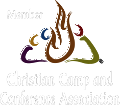Classes: click on one to find out more information
This includes hints on how to identify some of the common birds seen in Louisiana, teaching that shows students what makes birds birds, and activities that will help students understand some bird behaviors.
Learning Objectives
Learners will...
-
be taught the features of birds that make them distinct from other creatures
-
be challenged to identify at least ten of Louisiana’s most common birds
-
be exposed to five (5) different classifications of birds and a few examples of each
-
identify six (6) birds by their tracks etc.
Vocabulary
| afterfeather | double-clutching | melanin |
| barbs | dust-bathing | migration |
| barbules | ecology | natural selection |
| beak | ecoregions | oil gland |
| brood parasite | ecosystem | pellet |
| calamus | ecotone | preening |
| carnivore | ectothermic | primary feathers |
| circaidan rhythms | endothermic | rachis |
| circannual rhythms | gizzard | raptors |
| clutch | habitat | rectrices |
| contour feathers | hooklets | remiges |
| dabbling | mimicry | songs |
Birds
| American Goldfinch | European Starling | Northern Pintail |
| American Kestrel | Great Horned Owl | Painted Bunting |
| American Robin | Greater Road Runner | Pileated Woodpecker |
| Bald Eagle | House Sparrow | Prothonotary Warbler |
| Baltimore Oriole | Indigo Bunting | Red-Bellied Woodpecker |
| Barred Owl | Killdeer | Red-Breasted Nuthatch |
| Blue Grosbeak | Mallard | Red-Headed Woodpecker |
| Blue Jay | Meadow Lark | Ruby-Throated Hummingbird |
| Brown-Headed Cowbird | Mourning Dove | Scarlet Tanager |
| Brown Pelican | Northern Cardinal | Wood Duck |
| Carolina Chickadee | Northern Mockingbird | Tufted Titmouse |
| Eastern Bluebird |
Scripture References
- Genesis 1:20-23 -- God created birds on the fifth day.
- Matthew 6:25-34 -- Birds are provided for by God, their Creator
This is cuh-raize-eee (crazy) good fun. Students will be introduced to some of the common mammals of Louisiana. Activities and teaching time are presented so that students leave with a wealth of information about mammals. Click here to download the curriculum outline (this is the printable version of what you see below).
Learning Objectives
Learners will...
-
the features that make an animal a mammal
-
discover some of the common mammals found in Louisiana
-
be given information about the difference between nocturnal and diurnal creatures
-
learn that some mammals fly
-
etc.
Vocabulary
| autotroph | diurnal | mammals |
| cannibal | hair | mammary glands |
| canines | herbivore | middle-ear bones |
| carbohydrates | heterotroph | nocturnal |
| carnivore | homeostasis | omnivore |
| cranium | homeothermic | vertebrate |
| diaphragm | insectivore | vertebral column |
| digits | jaw |
Mammals
| Beaver | Gray Fox | Red Fox |
| Black Rat | Hispid Cotton Rat | River Otter |
| Bobcat | House Mouse | Southeastern Myotis |
| Brazilian Free-Tailed Bat | Marsh Rich Rat | Southern Flying Squirrel |
| Coyote | Mink | Swamp Rabbit |
| Eastern Gray Squirrel | Muskrat | Virginia Opossum |
| Eastern Pipistrelle | Nine-banded Armadillo | White-Footed Mouse |
| Eastern Red Bat | Nutria | White-Tailed Deer |
| Eastern Wood Rat | Raccoon | Wild Pig |
| Evening Bat | Rafinesque's Big-Eared Bat | Yellow Bat |
Scripture References
- Genesis 1:20-23 -- God created mammals on the fifth and sixth days.
The students will be presented with some of the cold-blooded creatures of Louisiana and the Deep South. Click here to download the curriculum outline (this is the printable version of what you see below).
Learning Objectives
Learners will...
-
learn the features that are used to classify an animal as an amphibian or a reptile
-
discover some of the common herps (amphibians and reptiles) found in Louisiana
-
be presented with subject-related vocabulary
-
participate in an activity about predator-prey relationships and how they relate to populations and ecology
-
about the life stages of amphibians and reptiles
-
etc.
Vocabulary
| amphibian | herbivore | reptile |
| autotroph | herpetology | scale |
| carnivore | heterotroph | scute |
| cranium | larva | tadpole |
| ectotherm | metamorphosis | venom |
| fang | mucus | vertebral column |
| gill | omnivore | viviparous |
| gland | oviparous | wart |
Amphibians and Reptiles
| Bird-Voiced Treefrog | Eastern Narrow-Mouthed Toad | Snapping Turtle |
| North American Bullfrog | Dwarf Salamander | American Alligator |
| Green Treefrog | Lesser Siren | Broad-Banded Water Snake |
| Greenhouse Frog | Southern Dusky Salamander | Timber Rattle Snake |
| Northern Cricket Frog | Gila Monster | Copperhead |
| Pig Frog | Green Anole | Diamondback Water Snake |
| Southern Leopard Frog | Mediterranean Gecko | Estern Garter Snake |
| Squirrel Treefrog | Broad-Headed Skink | Louisiana Milk Snake |
| Gulf Coast Toad | Box Turtle |
Scripture References
- Genesis 1:20-31 -- God probably made amphibians and reptiles on the fifth and sixth days.
This class could have a person going crackers. We combine our classes about birds, mammals, amphibians and reptiles into one course. In one hour and twenty minutes, students will explore the key differences between amphibians, reptiles, birds, and mammals.
This is two interactive games where students learn about survival and ecology. In class, students also learn about food chains, forest populations, survival, and much more. This is a class that is sure to please both teachers and students. Click here to download the curriculum outline (this is the printable version of what you see below).
Learning Objectives
Learners will...
-
be presented with ecosystem and ecological vocabulary
-
learn about energy transfer in an ecosystem
-
learn about carnivores, herbivores, and omnivores
-
see what it is like to be a predator or a prey animal
-
get a taste of what it might be like to survive in the wild
-
learn about the impacts humans make in an ecosystem
-
etc.
Vocabulary
| autotroph | food chain | population density |
| biological factor | food web | population distribution |
| biome | herbivore | population size |
| biosphere | heterotroph | predator |
| carnivore | inexhaustible resources | prey |
| carrying capacity | inorganic matter | primary producer |
| decomposer | nocturnal | renewable resource |
| deforestation | omnivore | saprophytes |
| diurnal | organic matter | scavenger |
| ecologist | parasite | succession |
| ecology | photosynthesis | wildlife management |
| ecosystem | physical factor |
Scripture References
- Genesis 3 -- The fall of man--the first sin.






